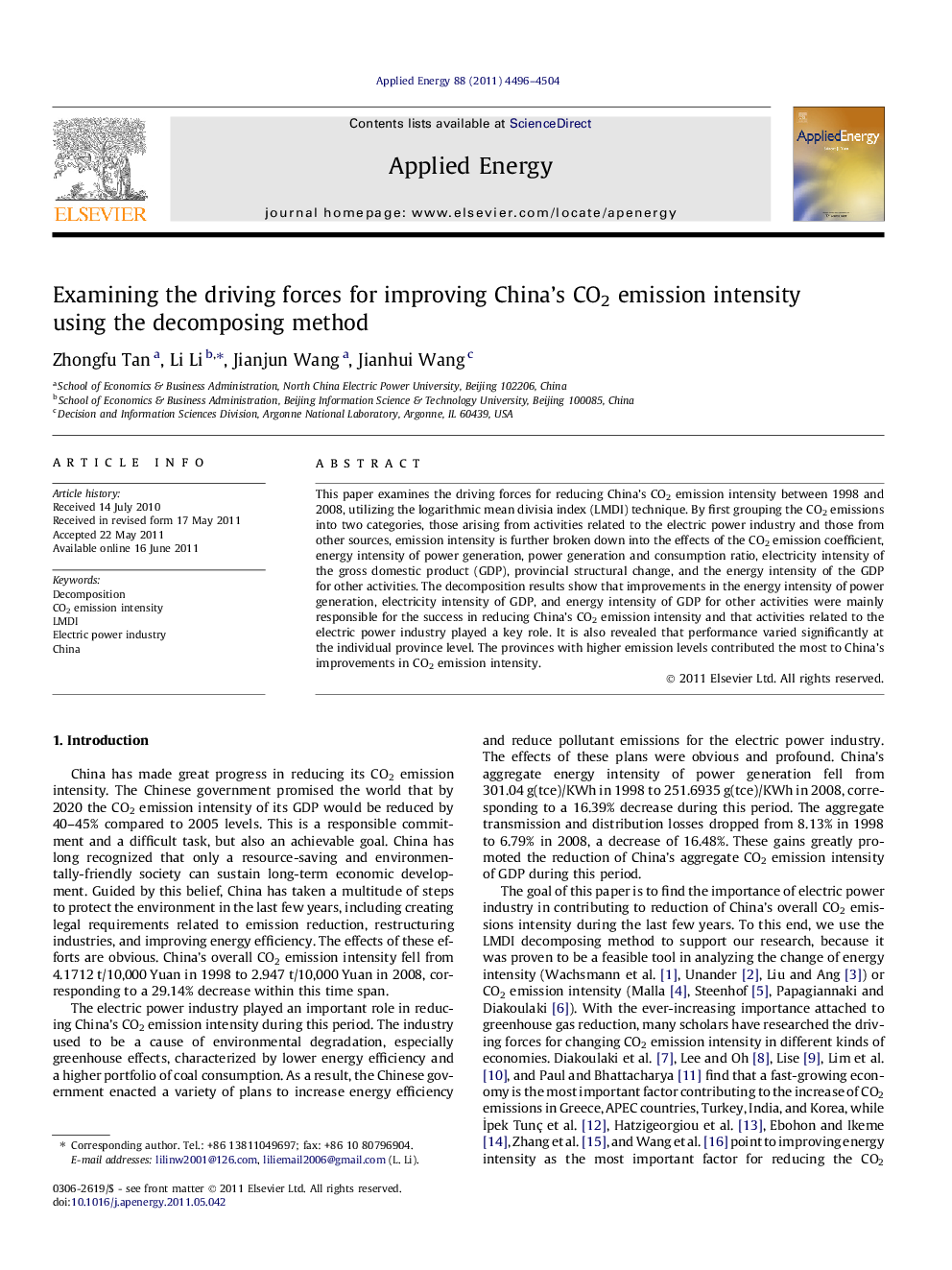| Article ID | Journal | Published Year | Pages | File Type |
|---|---|---|---|---|
| 243970 | Applied Energy | 2011 | 9 Pages |
This paper examines the driving forces for reducing China’s CO2 emission intensity between 1998 and 2008, utilizing the logarithmic mean divisia index (LMDI) technique. By first grouping the CO2 emissions into two categories, those arising from activities related to the electric power industry and those from other sources, emission intensity is further broken down into the effects of the CO2 emission coefficient, energy intensity of power generation, power generation and consumption ratio, electricity intensity of the gross domestic product (GDP), provincial structural change, and the energy intensity of the GDP for other activities. The decomposition results show that improvements in the energy intensity of power generation, electricity intensity of GDP, and energy intensity of GDP for other activities were mainly responsible for the success in reducing China’s CO2 emission intensity and that activities related to the electric power industry played a key role. It is also revealed that performance varied significantly at the individual province level. The provinces with higher emission levels contributed the most to China’s improvements in CO2 emission intensity.
► China’s CO2 emission intensity dropped substantially in last few years. ► The electric power industry played a key role in obtaining this gain. ► The contributions of other activities were also considerable. ► The provinces with higher emission levels contributed more than others.
